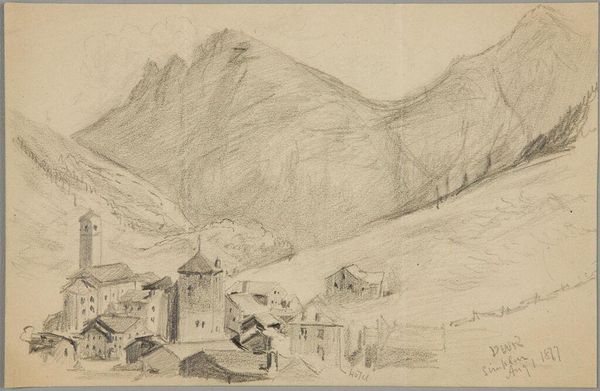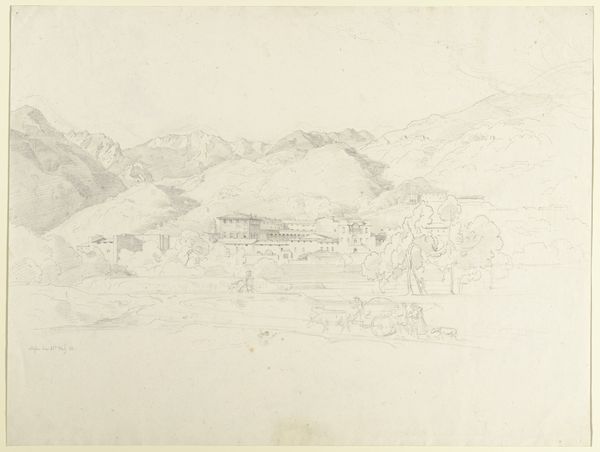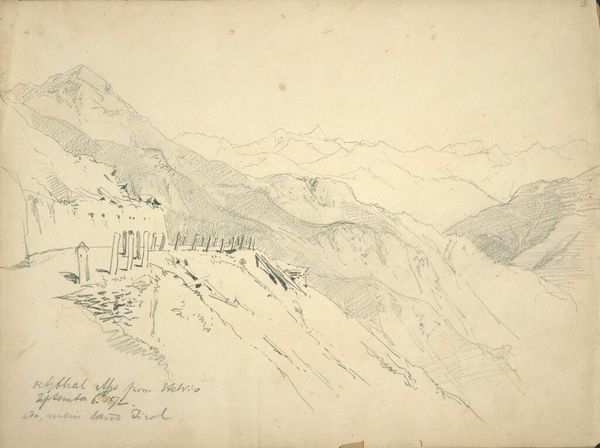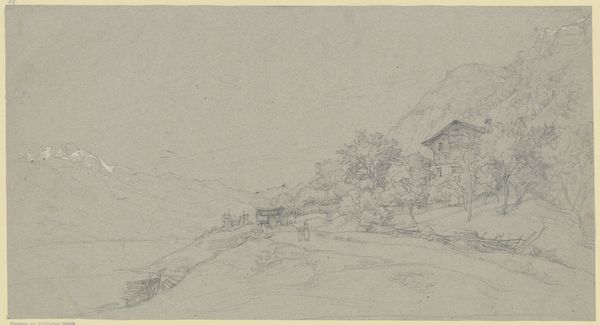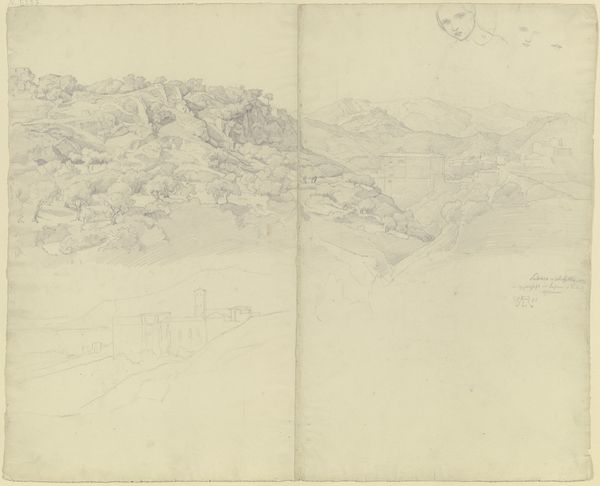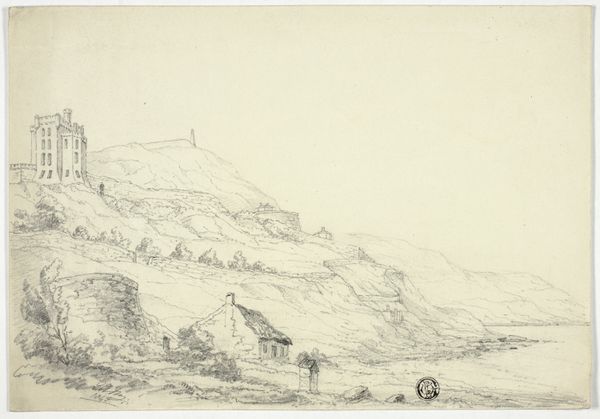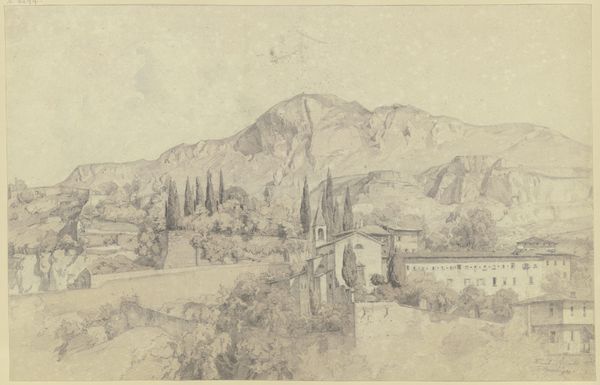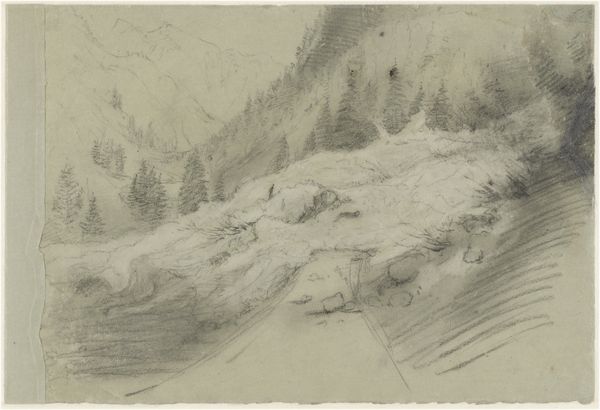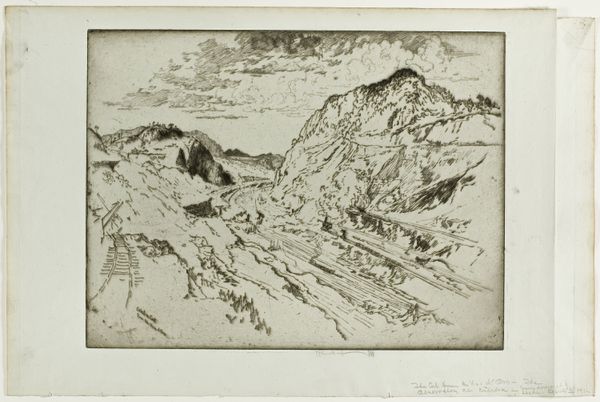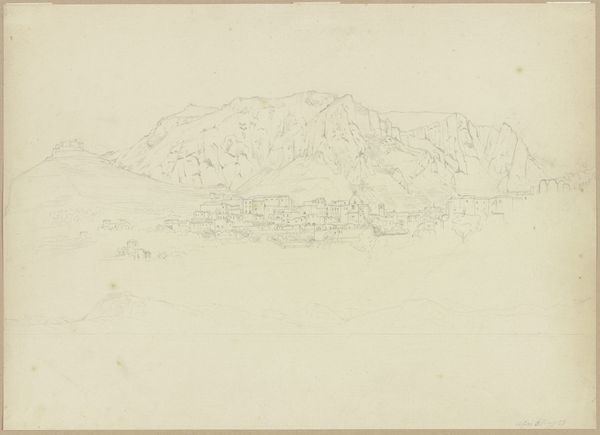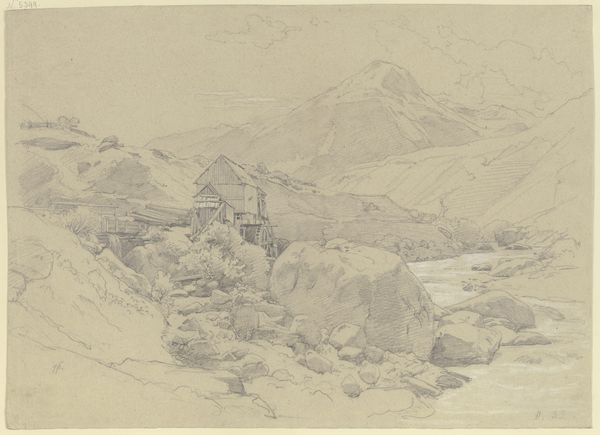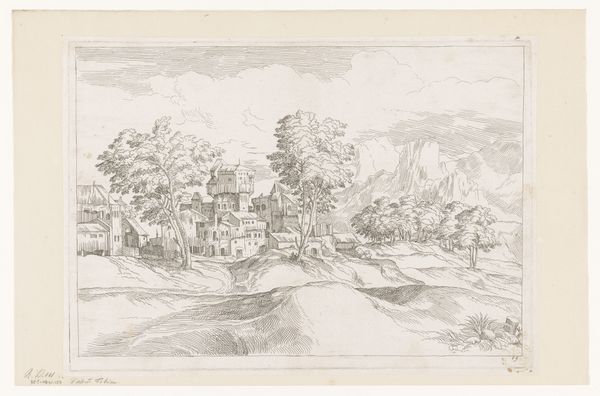
drawing, paper, pencil, graphite, architecture
#
drawing
#
landscape
#
etching
#
paper
#
personal sketchbook
#
romanticism
#
pencil
#
graphite
#
architecture
Copyright: Public Domain
Curator: Welcome. Today, we are looking at a drawing titled "Splügen in Graubünden" made by August Lucas in 1834. Editor: It possesses such a gentle and ethereal quality. The light graphite against the paper creates a landscape of soft transitions and quiet forms. Curator: Indeed. Lucas’s handling of graphite and pencil on paper here is really illustrative of his approach to capturing Romantic landscapes. Consider the location itself; Splügen, a remote alpine pass, becoming accessible. This corresponds with an expanding accessibility also mirrored in artistic practices like sketching from personal sketchbooks. The architectural details are sharply defined too, don't you think? Editor: I do. The clear distinction made through line, especially noticeable on those foreground buildings, suggests a semiotic order reflecting cultural imposition on the natural setting. I can almost feel the roughness of those rooftops. Curator: Interesting, since those architectural forms speak of a time of societal expansion into these mountainous areas. Remember also that etching, like what we see alluded to here, becomes cheaper during the time. And cheaper mediums create more sketches, which lead to preliminary work done out in the field. Editor: I note, however, that there are elements like the distant peaks blurred, a formal strategy placing greater emphasis on immediate constructed surroundings. This composition isolates certain planes to suggest how landscape gets broken down and stylized within individual experience. It suggests romanticizing nature. Curator: Precisely, and it is those layers—literal layers on the page, figurative ones in societal context—that truly animate this piece. One sees, via line, a relationship between culture, material access and expanding possibilities to the wider populations who would engage in these journeys themselves. Editor: And yet, focusing in upon form lets me consider not just how people interpret their physical surroundings but how perception relies upon symbolic coding inherent in mark making. It all ties into structure in my estimation. Curator: Absolutely. Each angle helps paint the past and bring awareness of how social forces transform not just terrains, but the materials and modes that mediate that terrain as a visual form. Editor: By shifting the focus to visuality itself, perhaps our experience becomes all the more fuller and nuanced.
Comments
No comments
Be the first to comment and join the conversation on the ultimate creative platform.
